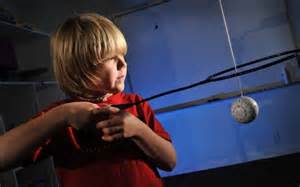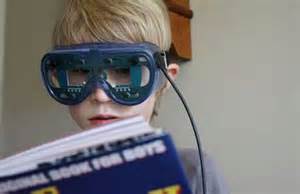Your Child's Vision
All children are recommended to have an eye exam at the age of 6 months, 3 years, and again before starting kindergarten (American Optometric Association). 75-90% of what a child learns in school is presented visually; therefore, good vision is essential for students of all ages to reach their full academic potential.
 Seeing 20/20 does not necessarily mean your child has good vision. Many learning difficulties can be attributed to vision problems that are not detected during typical school vision screenings. Symptoms of learning-related vision problems include:
Seeing 20/20 does not necessarily mean your child has good vision. Many learning difficulties can be attributed to vision problems that are not detected during typical school vision screenings. Symptoms of learning-related vision problems include:
- Headaches or eye strain
- Blurred vision or double vision
- Crossed eyes or eyes that appear to move independently of each other
- Dislike or avoidance of reading and close work
- Short attention span during visual tasks
- Turning or tilting the head to use one eye only, or closing or covering one eye
- Placing the head very close to the book or desk when reading or writing
- Excessive blinking or rubbing the eyes
- Losing place while reading, or using a finger as a guide
- Slow reading speed or poor reading comprehension
- Difficulty remembering what was read
- Omitting or repeating words, or confusing similar words
- Persistent reversal of words or letters (after second grade)
- Difficulty remembering, identifying, or reproducing shapes
- Poor eye-hand coordination
- Evidence of developmental immaturity
If your child shows one or more of these symptoms and is experiencing learning problems, it's possible he or she may have a learning-related vision problem. A comprehensive eye exam with your optometrist can help determine if a problem exists and can be managed with glasses, contact lenses, and/or vision therapy.
Vision therapy is an individualized progressive program of visual exercises performed under doctor supervision. The vision therapy procedures can:
- Help patients develop or improve fundamental visual skills and abilities
- Improve visual comfort, ease, and efficiency
- Change how a patient processes or interprets visual information

Essential elements your Optometrist at Woodcrest Vision Center will check during a comprehensive eye exam to make certain learning is maximized through good vision.
- Visual acuity is measured at several distances so students can comfortably and efficiently read, work on the computer, and see the blackboard.
- Focusing is an important skill that is tested. Eyes must be able to focus on a specific object and to easily shift focus from one object to another. This allows the child to move visual attention from a book to the blackboard and back.
- Visual alignment and ocular motility are evaluated. Ideally, the muscles that aim each eye converge so that both eyes are aimed at the same object, refining depth perception.
- Binocular fusion (eye teaming) skills are assessed. These skills are critical to coordinate and align the eyes precisely so the brain can fuse the pictures it receives from each eye into a single image.
- Eye tracking skills are tested to determine whether the child can track across a page accurately and efficiently while reading and can copy material quickly and easily from the blackboard or another piece of paper.
- Testing preschoolers' color vision is important because a large part of the early educational process involves the use of color identification.
- Eye-hand-body coordination, critical for handwriting, throwing a ball, or playing an instrument, and visual perception, used to interpret and understand visual information like form, size, orientation, texture, and color perception, are important visual functions that are reviewed. (Tested in additional thorough evaluation if signs and symptoms suggest deficiency. Not included in the initial comprehensive exam.)
- Overall eye health is determined by examining the structures of the eye.
